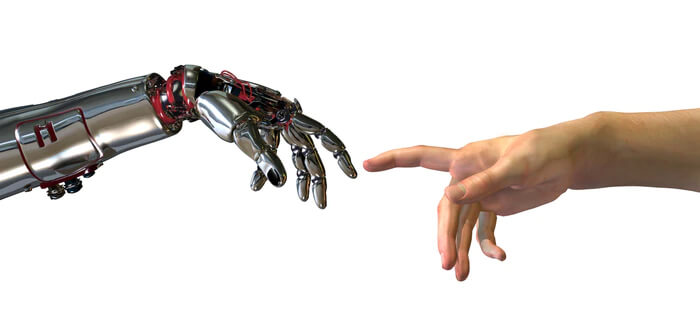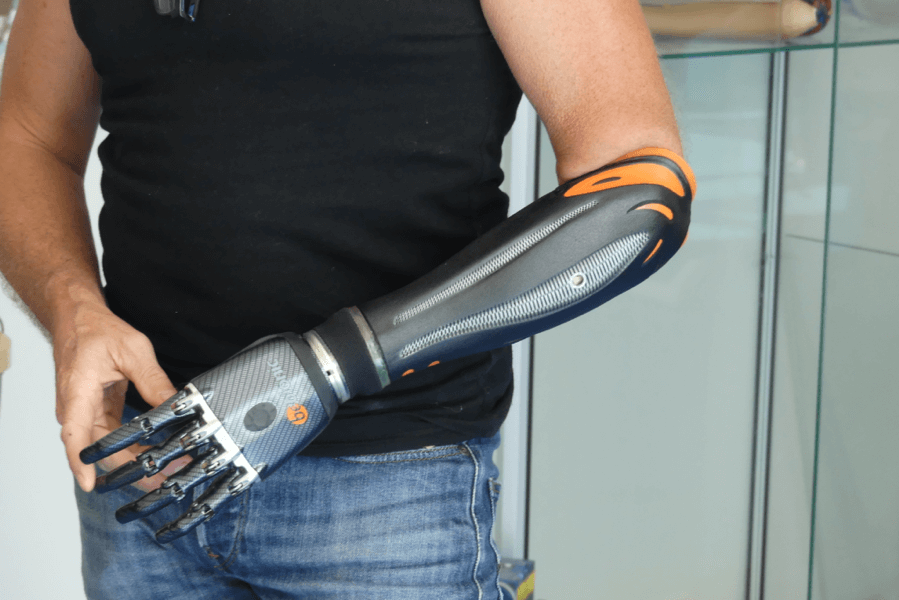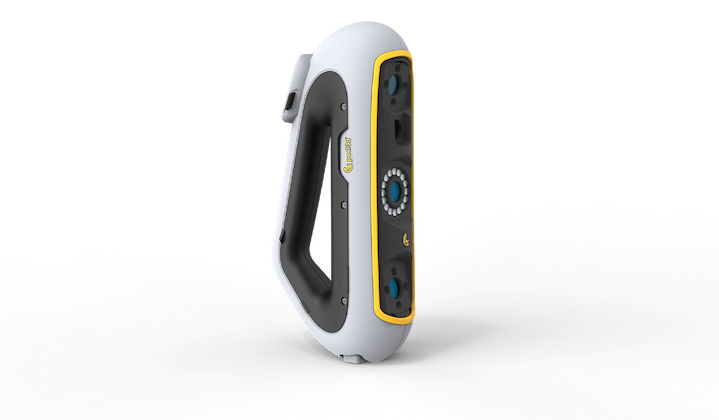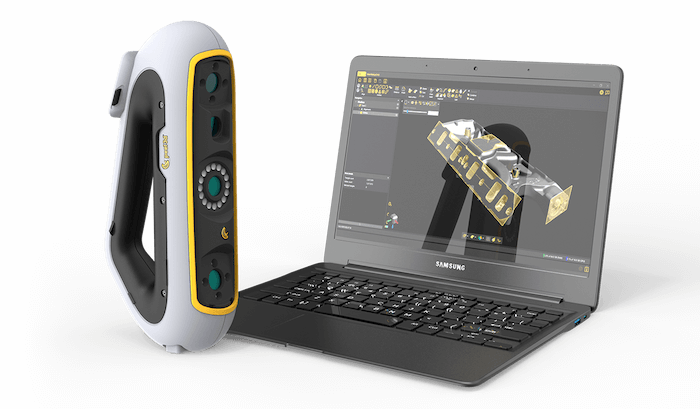3D printed prosthetics: A new era of possibilities

As technologies improve and become more accessible, new possibilities are emerging—and solutions to many healthcare challenges are improving. This is how the R&D team from Chabloz Orthopedie managed to create a one-of-a-kind, revolutionary prosthetic.
Chabloz Orthopedie worked with Denis Gauthier, a patient at Chabloz Seyssinet, and amputated at the forearm. The team first started by 3D scanning Gauthier’s opposite limb with Peel 3D to create a mirror image to work with. This was carried out to ensure that the prosthetic would be perfectly proportional to the other limb. The residual limb was also scanned to ensure the prosthesis's comfortable and ergonomic fit.
Interested in 3D scanning?
Contact our Peel 3D experts
Denis Gauthier wearing the finished product
The team then moved to the CAD design phase and started designing the myoelectric prosthetic. The existing batteries, sensor cables and synthetic hand were fitted inside and around the custom synthetic forearm. The entire prosthesis body was designed in CAD and sent to a 3D printer for manufacturing. HP Jet Fusion technology was used to print the different components composing the forearm; the parts were then finished and painted.
3D scanning and 3D printing not only guarantee that the prosthetic can be properly worn but also allows complete freedom of movement. This new approach to designing prosthetics also will enable professionals to develop lightweight solutions that can be entirely customizable. Did you know that 3D-printed parts are 20% lighter when compared with their fibreglass or carbon-fibre equivalents? In addition, 3D-printed parts offer just the proper rigidity, hardness and durability.
This very innovative prosthetic was then fitted with a BeBionic hand, one of the most advanced bionic hands available in the world. The final result: a custom-made lightweight, ultra-advanced myoelectric forearm and hand. We call this a truly innovative way to use new 3D measurement and 3D printing technologies!
For more information, you can see the interview performed by a 3D native here.
Wonder how Peel 3D can transform your work, solve problems, and save you time?
Contact our Peel 3D expertsauthor
ABOVE MENTIONED PRODUCTS


